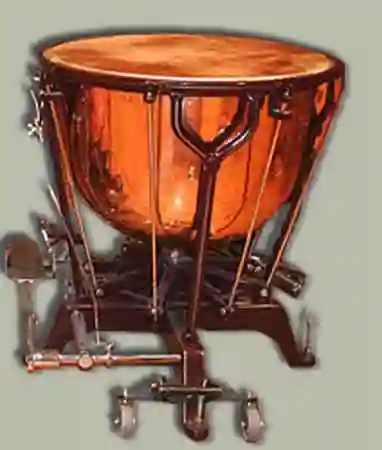Historical development of the Timpani - Philipp Dangas
Historical development of the Timpani
The timpani was already known to many peoples in the earliest antiquity and is therefore one of the oldest instruments. Two types can be distinguished for the medieval history of the timpani, namely a) the small bowl-shaped naggarah of the Arabs and b) the kettledrum, which is to be regarded as the root instrument of the timpani.
The timpani that were first used in Germany were still fixed by complicated oriental-style lacing. During the Renaissance, timpani were not yet used in art music. Even at the beginning of the 17th century, the timpani were of secondary importance for art music, like all percussion instruments. They were then entrusted with important tasks in the orchestras of Johann Sebastian Bach and Georg Friedrich Händel . They finally achieved great importance in the classical orchestra.
Chromatization caused by the invention of valves for the horns and trumpets made it necessary for the timpani to change mood quickly during play. The basic idea for solving the problem came in 1812 from the Munich court drummer Gerh. Kramer and was realized by the Vienna Hans Schneller with the construction of the machine drum. The system of today's timpani was devised by the Dresden musician C.Pittrich around 1872. Now you could tune the timpani steplessly and quickly with your foot. The timpanist now had both hands free during the tuning process and was able to perform a twirled glissando, which was new.
Download size: 97.2 kilobytes
Table summary of the use of timpani in music
The following table describes the use of the timpani in music shown. Musical works are performed with the name of the composer and the work.

The timpani in large scale
The timpani (Italian timpano, English timbal or kettledrum; "kettle drum") is the most important percussion instrument from the group of membranophones. It consists of an almost hemispherical (copper) kettle that is open at the bottom.
It is covered with an artificial or natural fur. With a mechanism attached to the edge, the skin can be stretched to different degrees. In contrast to the drum, the pitch of the sound can be changed.
Internal search function
| Name | Value | Delete |
|---|